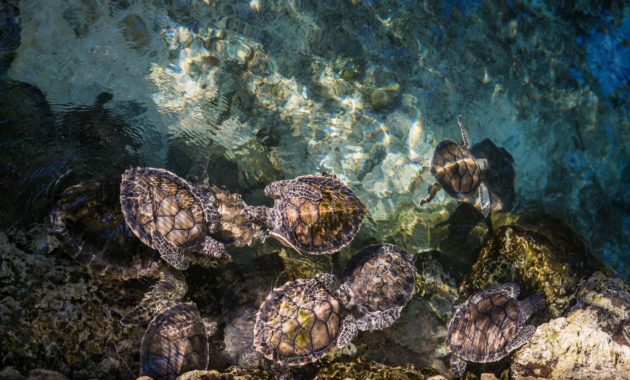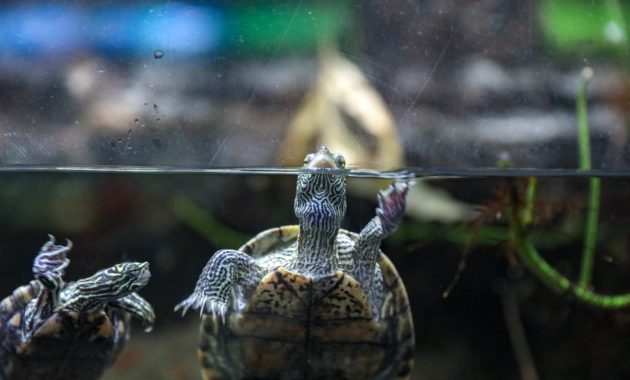
Immerse yourself in the captivating world of the Mississippi Map Turtle. Picture yourself gliding through the crystal-clear waters, surrounded by lush vegetation and the subtle hues of their unique carapace.
But there’s more to these turtles than meets the eye. From their high maintenance care requirements to their preferred habitats, the Mississippi Map Turtle has a fascinating story to tell.
So, if you’re curious to uncover the secrets behind their striking colors and distinctive features, join us as we embark on a journey to discover some truly intriguing facts about these remarkable creatures.
Key Takeaways
- The Mississippi Map Turtle is a small-sized turtle found in the Mississippi River and 10 other states.
- It has a unique carapace with a ridge down the center, ranging in color from brown to olive with orange to yellow semi-circles on the scutes.
- The female grows to 6-10 inches while the male reaches 3½-5 inches in length.
- They require clean freshwater with a high-quality water filter, with water temperature in the low to mid 70s Fahrenheit for adults and a basking area temperature in the high 80s to low 90s Fahrenheit.
Size and Lifespan
The Mississippi Map Turtle is a small-sized turtle with a length that can vary, and it has a lifespan of 30+ years, making it comparable to the Northern Map Turtle. This turtle requires high maintenance in terms of care.
It isn’t native to Mississippi but can be found in the Mississippi River and 10 other states. The Mississippi Map Turtle prefers lakes, large streams, and rivers with vegetation. You can spot them in Nebraska, Illinois, Mississippi, and Texas.
Part of the Map Turtle species, this turtle has a unique carapace with a ridge down the center. The female is larger, growing to 6-10 inches, while the male reaches 3½-5 inches. Males have longer nails on their forelegs. The carapace of the Mississippi Map Turtle ranges from brown to olive, with orange to yellow semi-circles on the scutes. The plastron is yellowish to tan, with brown lines resembling wood grain.
To care for this turtle, provide clean freshwater with a high-quality water filter, maintain water temperature in the low to mid 70s Fahrenheit for adults, and offer a basking area with a temperature in the high 80s to low 90s Fahrenheit. Additionally, provide 12 hours of UVB lighting daily and an enclosure size of 75-90 gallons for males and 125 gallons for females.
Native Habitat
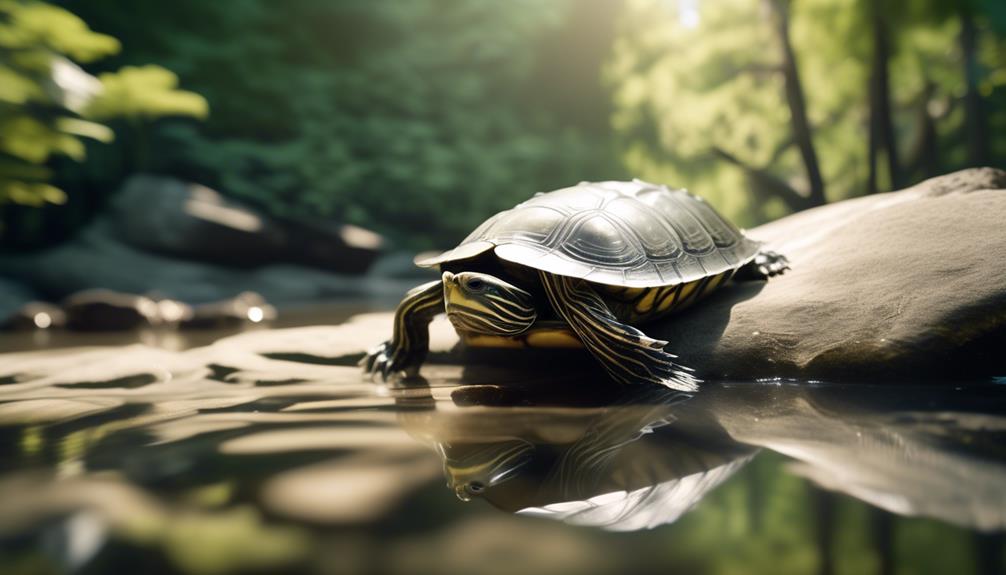
Mississippi Map Turtles aren’t native to Mississippi; they can be found in the Mississippi River and 10 other states across the United States. These turtles prefer habitats in the Mississippi Valley, such as lakes, large streams, and rivers with vegetation. They can also be seen in states like Nebraska, Illinois, Mississippi, and Texas.
Unlike their name suggests, they don’t inhabit the entire state of Mississippi. These turtles require clean freshwater with a high-quality water filter. For their environment, the water temperature should be in the low to mid 70s Fahrenheit for adults, while the basking area should have a temperature in the high 80s to low 90s Fahrenheit. Additionally, they need 12 hours of UVB lighting daily and an enclosure size of 75-90 gallons for males and 125 gallons for females.
Overall Description
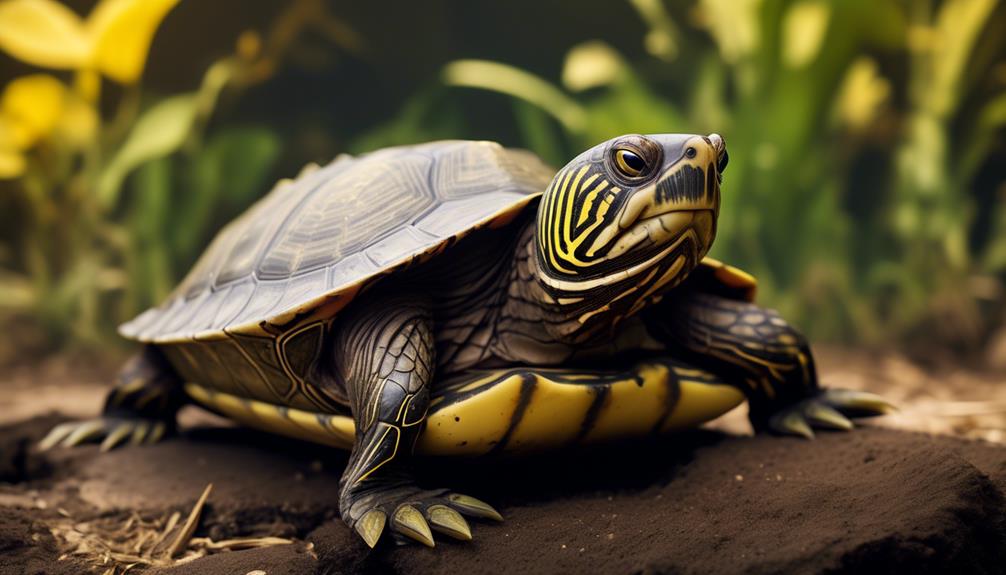
Although not native to Mississippi, the Mississippi Map Turtle has distinct characteristics that make it a fascinating species to study.
As a part of the Map Turtle species, it boasts a unique carapace with a ridge down the center. The carapace ranges from brown to olive, with orange to yellow semi-circles on the scutes. While the pattern is more obvious in young turtles, the plastron is yellowish to tan with brown lines resembling wood grain.
The female is larger than the male, growing to 6-10 inches compared to the male’s 3½-5 inches. Males have longer nails on their forelegs, adding to their distinctive appearance.
These features, along with its high maintenance care requirements, make the Mississippi Map Turtle a captivating creature to observe and learn about.
Colors
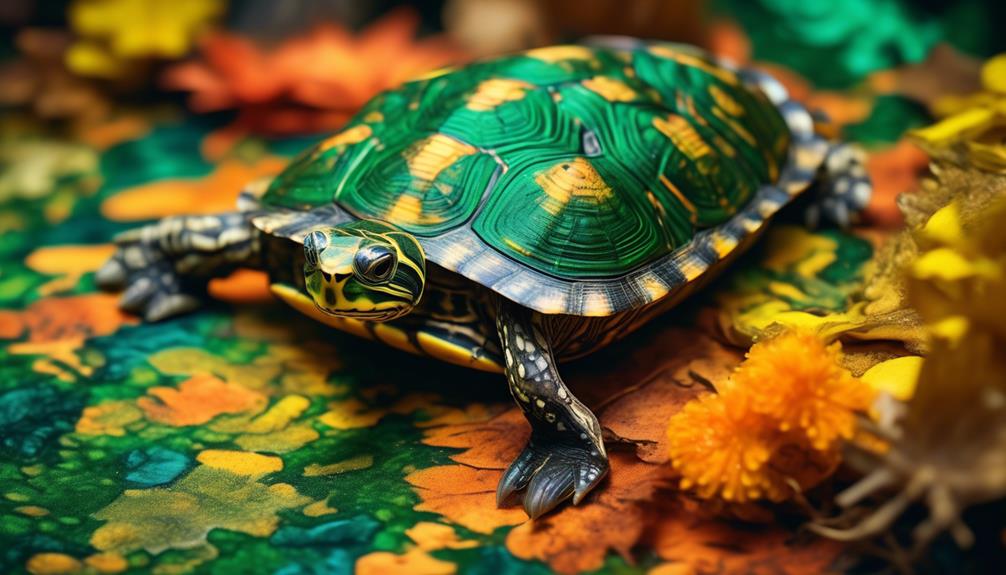
The carapace of the Mississippi Map Turtle showcases a range of earthy hues, from brown to olive. This unique coloration adds to its charm and makes it easily distinguishable from other turtle species. The carapace is adorned with orange to yellow semi-circles on the scutes, which are more prominent in young turtles. The plastron, on the other hand, is yellowish to tan in color and features brown lines that resemble wood grain. To help you visualize the striking colors of the Mississippi Map Turtle, here is a table showcasing its distinct hues:
| Carapace Color | Scute Color |
|---|---|
| Brown | Orange |
| Olive | Yellow |
| Earthy | Prominent |
| Distinguishable | Striking |
| Unique | Wood grain |
These colors, along with its ridge down the center of the carapace, make the Mississippi Map Turtle a truly fascinating and visually appealing reptile.
Environment and Care Requirements
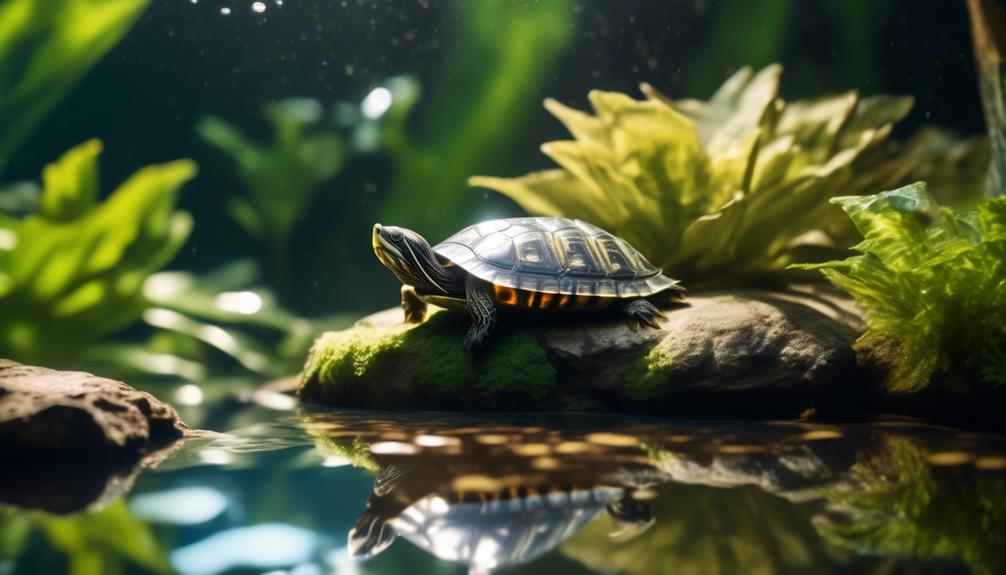
To properly care for a Mississippi Map Turtle, it’s important to create an appropriate environment and meet specific care requirements.
This turtle requires clean freshwater, so make sure to provide a high-quality water filter to keep the water clean. The water temperature should be in the low to mid 70s Fahrenheit for adults. Additionally, the turtle needs a basking area with a temperature in the high 80s to low 90s Fahrenheit.
UVB lighting is also necessary for 12 hours daily to ensure the turtle’s health. When it comes to the enclosure, males require a size of 75-90 gallons, while females need a larger space of 125 gallons.
Additional Facts
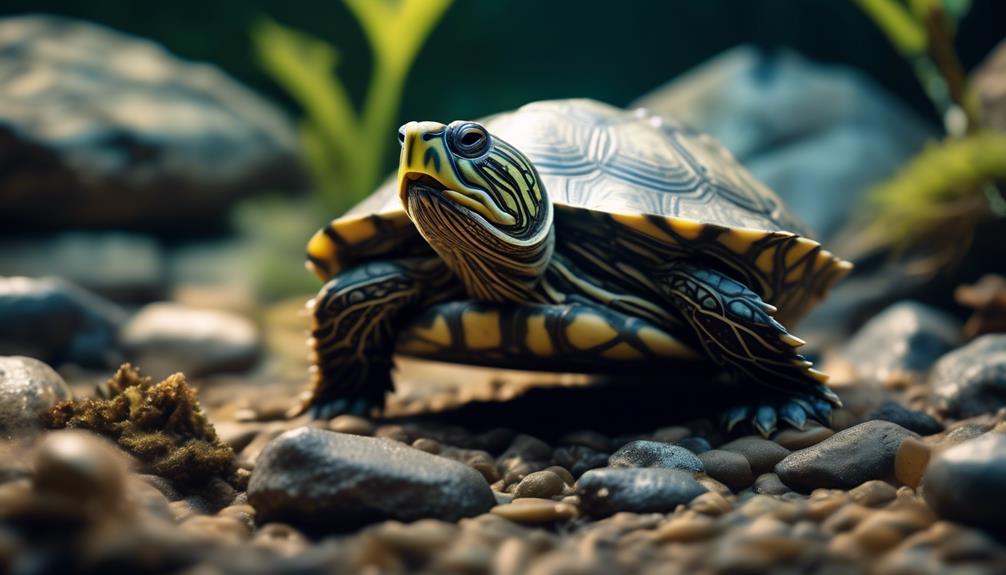
Here are some additional interesting facts about Mississippi Map Turtles:
- Their diet consists mainly of aquatic plants and insects, but they also eat small fish and invertebrates.
- They’re known for their strong swimming ability and can often be seen basking on logs or rocks.
- Mississippi Map Turtles are known to be quite vocal, making a variety of sounds including hissing, grunting, and squeaking.
These additional facts provide further insight into the behavior and characteristics of Mississippi Map Turtles.
Their diverse diet and adaptability to different environments showcase their versatility as a species.
Additionally, their vocalizations add an interesting aspect to their communication methods.
These facts highlight the unique and fascinating nature of Mississippi Map Turtles.
Frequently Asked Questions
Are Mississippi Map Turtles Endangered or at Risk of Becoming Endangered?
Mississippi map turtles are not currently endangered, but they may be at risk in the future due to habitat loss, pollution, and the pet trade. Conservation efforts are important to protect these unique turtles.
How Often Do Mississippi Map Turtles Lay Eggs?
Mississippi Map Turtles lay eggs once a year, usually in the spring or early summer. The female will dig a nest in the ground near water and lay around 9-30 eggs.
Can Mississippi Map Turtles Be Kept as Pets in Small Enclosures or Tanks?
Yes, Mississippi Map Turtles can be kept as pets in small enclosures or tanks, but it is not ideal. They require larger enclosures, such as 75-90 gallons for males and 125 gallons for females, to thrive.
Do Mississippi Map Turtles Require Any Specific Type of Vegetation in Their Habitat?
No, Mississippi Map Turtles do not require any specific type of vegetation in their habitat. They prefer lakes, large streams, and rivers with vegetation, but it is not necessary for their care.
How Do Mississippi Map Turtles Defend Themselves Against Predators?
Mississippi Map Turtles defend themselves against predators by retreating into their shell and closing it tightly. They also have sharp claws and a strong bite, which they can use to fend off attackers.
Are there any similarities between Mississippi Map Turtles and African Sideneck Turtles?
Mississippi Map Turtles and African Sideneck Turtles have some fascinating African Sideneck Turtle facts that make them similar. Both species are aquatic turtles with unique spotted patterns on their shells. They also share a preference for shallow, slow-moving water, making them excellent swimmers.
Conclusion
So there you have it, some fascinating facts about the Mississippi Map Turtle. With their unique characteristics and captivating behaviors, these turtles are truly a wonder to behold.
Whether you’re considering getting one as a pet or simply want to learn more about them, understanding their size, habitat, and care requirements is crucial.
So dive in and explore the amazing world of the Mississippi Map Turtle!


